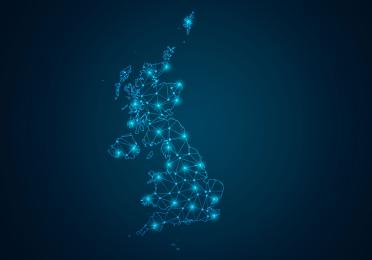Interactive maps are web-based maps that allow users to click, pan and zoom for further information. They can be geographical maps to show location-specific data, or use layers to showcase multiple data sets. Some interactive maps use geo-tagging technology, where a GPS system is used to identify the exact location of a user. There are various ways interactive maps can be designed to engage and support the user journey, so we’ve detailed how they can provide a rich, dynamic user experience (UX).
Interactive maps for improved UX
Visual display of data
In general, we process visual data much quicker than the written word. Rather than making users scroll through a page of text, you can easily display relevant location data with an interactive map. With different layers allowing for various datasets, your users can interact with the map to find information that’s relevant to their intentions. Sites like WWF Arctic Spills show how easily multiple datasets can integrate for a rich user experience. On their map you can find the location of recent oil spills, the impact of these spills and the damage that hypothetical events could cause.
The WWF’s map is a comprehensive example, but for most businesses, interactive maps show less information and use more targeted data. For example, a product page could feature an interactive map that shows the popularity of a product. The map could display pins of all the locations where your product has been purchased, providing social proof to the end user. With several ways of displaying data within an interactive map, it’s important to brainstorm which route is the best for your business before moving to the design stage.
Maintain the user flow
Implementing an interactive map on your site gives users the information they need quickly and clearly. From a UX point of view, every part of a site should be scrutinised to ensure all elements provide a meaningful interaction. For this reason, an interactive map should display relevant information in an intuitive way to keep users on the intended user flow. For example, if you’re showcasing events happening next month across the UK, an interactive map can easily display this information without the need for lists, unnecessary text or multiple pages. The quicker the user gets what they need in the user journey, the quicker they’ll move onto the next step, meaning more conversions for your business.
Provide a personalised user experience
Whatever your service or product offering, personalised user experiences are a must for all businesses with a digital presence. A good example of this was highlighted in a Hubspot study where “personalised call to actions (CTAs) performed 202% better than basic CTAs”.
Interactive maps can fuse with personalisation to provide additional value to the end user. You could easily use established-geographical technology, like GPS, to connect a user's location with the location of one of your stores. Equally, user generated content (UGC) could be added to your interactive map, forging a connection between your brand and customers. Gordon Ramsay Restaurants' site has showcased how this idea can be developed, keeping true to brand and professional. The interactive map on their homepage allows the user to find and click on a restaurant, loading UGC from Instagram that displays dishes customers have tried. With a personalised experience like this, you can increase the likelihood of improving your conversion rate. In short, the more geared towards user's intentions your map is, the better the impact on your conversions.

Considerations
Put your users first
Whether you’re using a timeline, zoom function or pan model for your interactive map, you have to display the information in a way that users will understand. The visuals should be clear and any accompanying text should be concise. Mixing visuals, text and motion can easily overwhelm users, causing them to either move backwards in the user flow or leave the site. Being clear on why you’re using an interactive map, what you’re showing and how you’ll use it to your advantage will increase engagement.
Equally, it’s important to consider any issues your users may have with the map. This could include adapting the interactive map for varying screen sizes; accommodating pin points (or points of interest) to be large enough to tap or click on; deciding on the offline-accessibility of the map. Don’t forget to design and develop with disabled or impaired users in mind, making sure your interactive map is available for all.
Creation and development time
Needless to say, there’s more to interactive maps than the development side; they need to be planned with input from multiple departments. Your team should review where the map will feature in the user journey, design the map a certain way to promote your brand’s image and develop it with future growth in mind. The pre-planning and development will inevitably require time and budget, but an interactive map that showcases important data can easily outweigh the budget implications if it improves user experience.
Interactive maps keep your users engaged
Interactive maps can improve user experience, but careful pre-planning is vital. Making sure you’re displaying the right information in a clear, easy-to-use interactive map will keep your users engaged and provide additional value. Remember that not all information translates well on an interactive map, so discussing your plans with an expert team is vital.
If you're thinking of using geographical data to improve your business' site, get in touch with our experienced team. Since 2009 we’ve been helping businesses obtain digital growth by creating intuitive, bespoke solutions.

